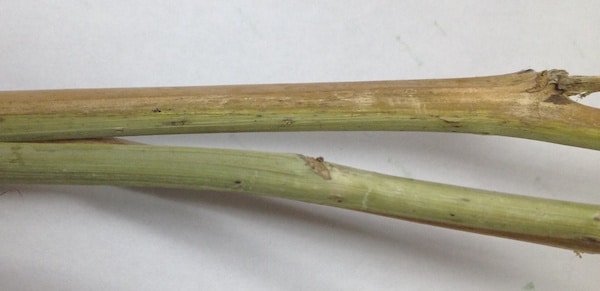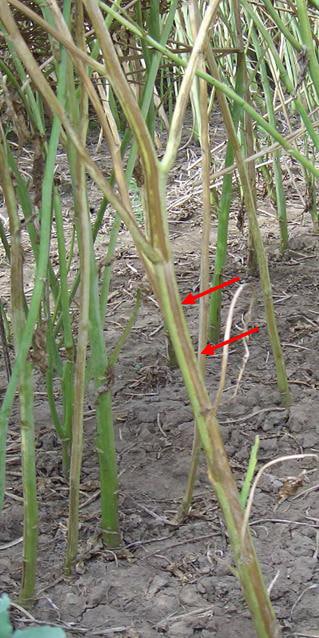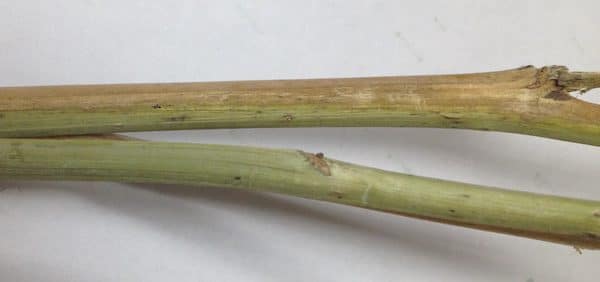Verticillium wilt was found in a canola field in Manitoba in 2014, and a survey of approximately 1,000 fields across Canada is underway this summer and fall.


What to look for: Disease symptoms in canola include leaf chlorosis, early ripening, and stunting. Late in the season, look for dead areas on plants and shredding of the stem tissue. Once the plant is fully ripe, the stem peels to reveal tiny black microsclerotia which resemble ground pepper in appearance. These microsclerotia remain on the plant stem and return to the soil as plant material decays.
If you see what could be verticillium wilt, contact a CCC agronomy specialist or the local provincial government ag office.
Lookout for anything unusual. Arrival of new diseases, insects and weeds is part of crop production. Growers and agronomists are encouraged to keep an eye out for anything unusual, and to call in a specialist to help identify what cannot be identified. Early detection is often an important step in stopping or slowing progress of a new disease, insect or weed. This past week, jimsonweed was found in a few fields in central Alberta. This is a noxious weed, and the goal is eradication.
Further reading:
Verticillium wilt Q&A from CFIA
Verticillium wilt chapter in Canola Encyclopedia
Diseases to look for while harvest scouting

